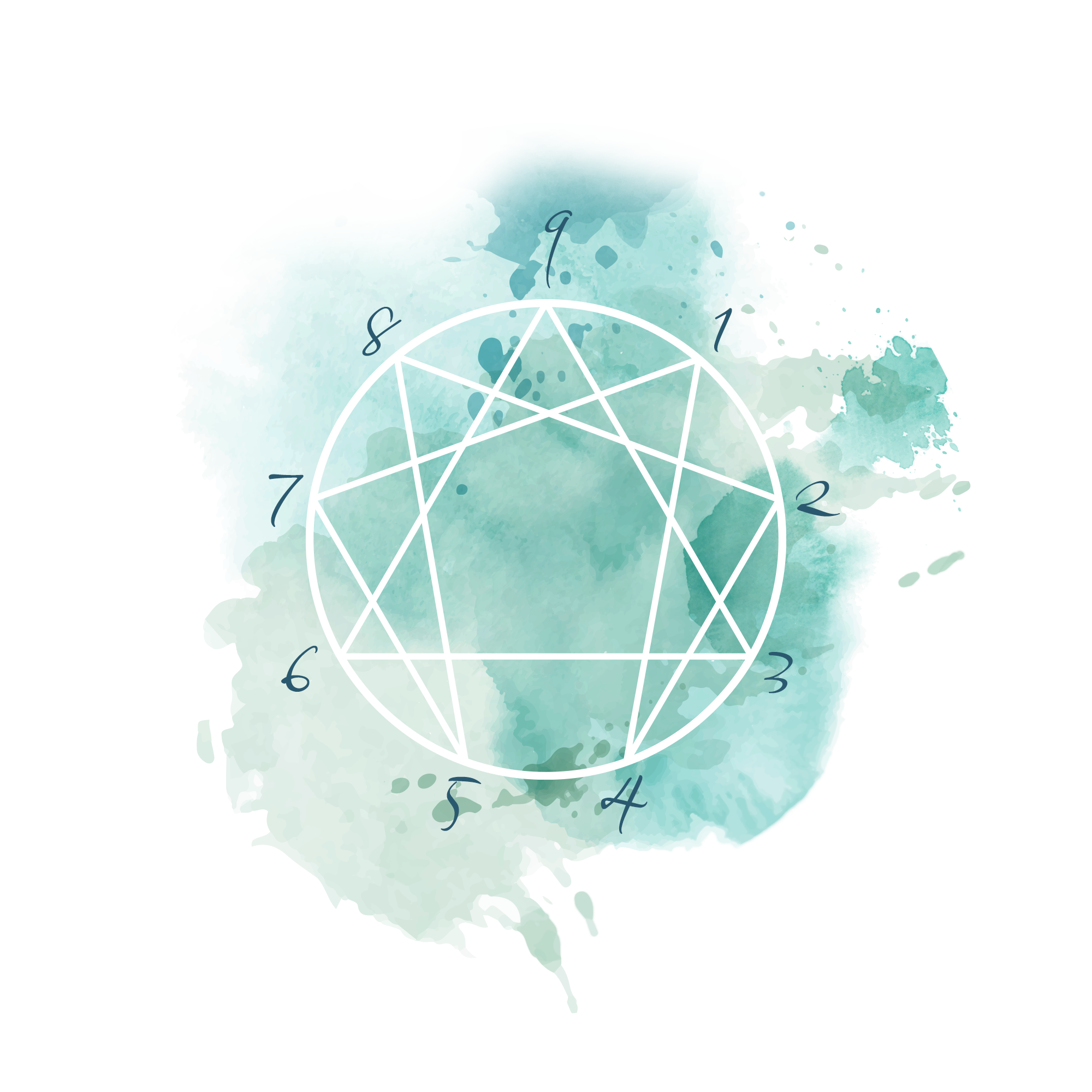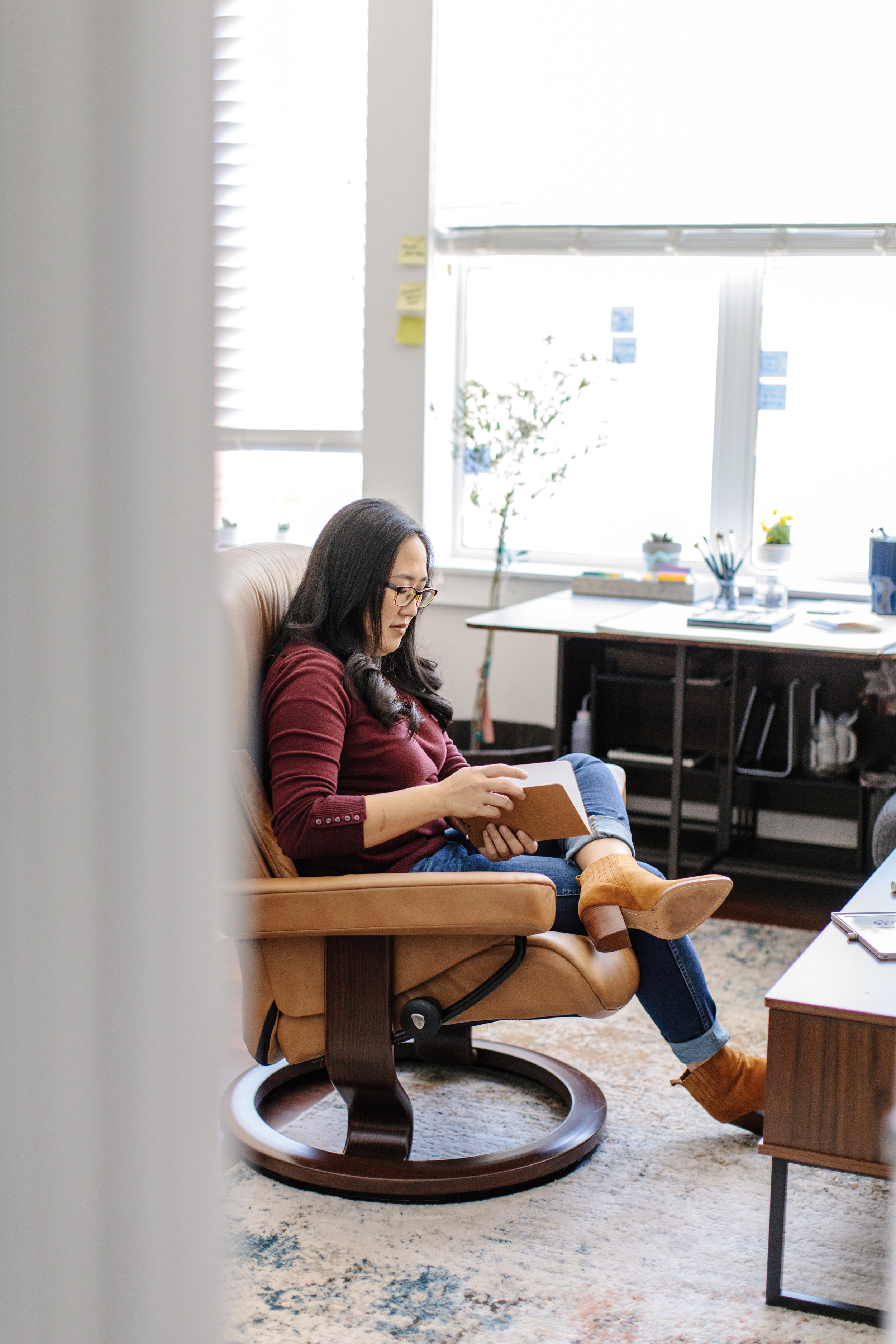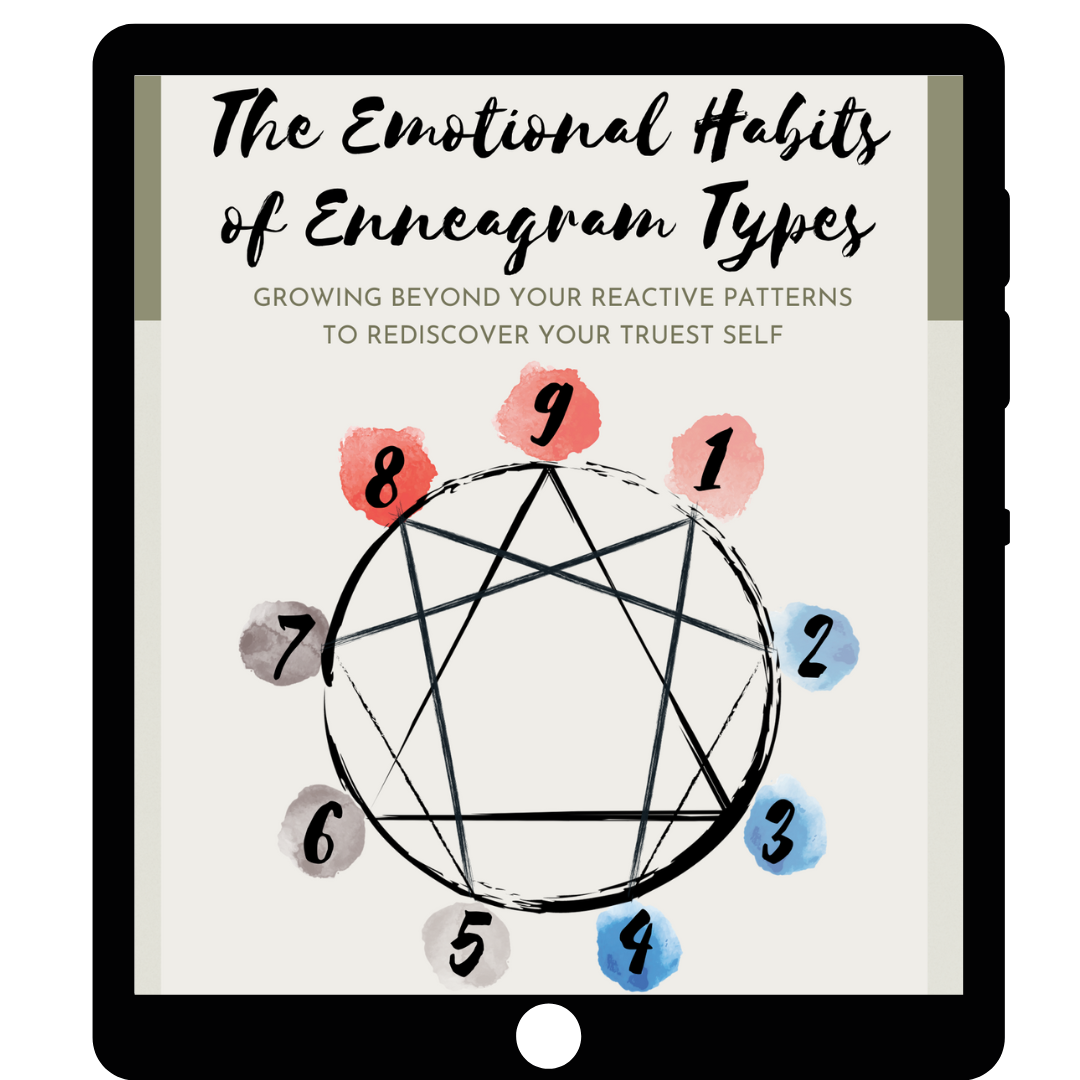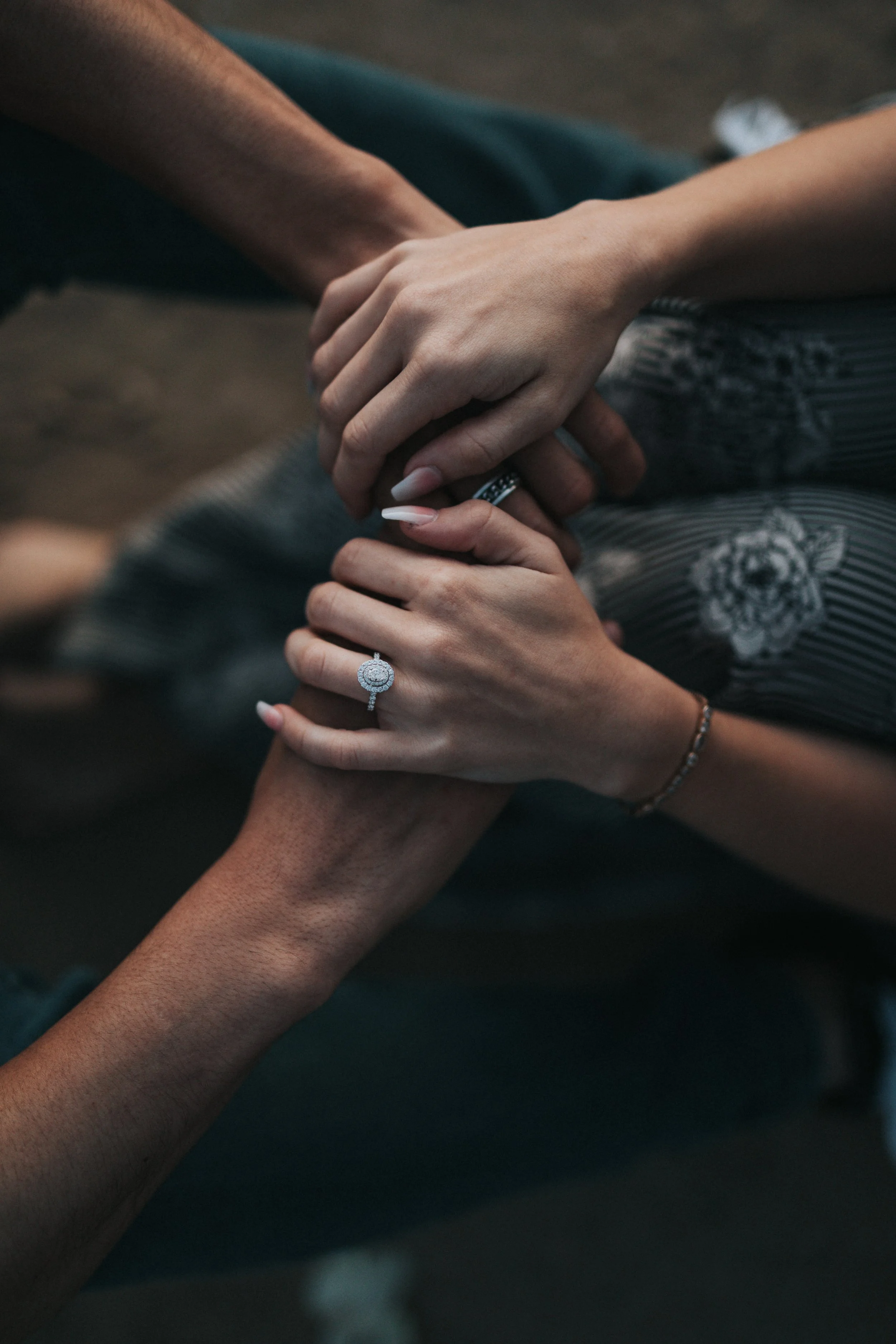My therapist colleague Melinda Olsen (Inviterra Counseling) and I are writing several blog series about the Enneagram, a comprehensive yet compact personality framework that reveals our reactive, “autopilot” patterns of thinking, feeling, doing, and relating.
In this series, someone from each Enneagram Type (Types One through Nine) will be sharing about their own journey of discovering and using the Enneagram for deep healing and personal growth.
I will be sharing about Type 4.
Here are other types posted in the series so far:
Type 1 - Josh Chan
Type 2 - Melinda Olsen, LMFT
Type 3 - Morgan Hancock, LMFT
Type 5 - Alyssa Harris
Type 6 - Jonathan Siu
Type 7 - Stefie Dominguez
Type 8 - Marianna Torres
Type 9 - Lorren Siu, LMFT
What Is it Like to be an Enneagram Four?
Anchored Inside
Enneagram Type Fours are strongly connected to their rich inner world of emotions and thoughts. The best thing about Fours is that they can be incredibly introspective, thoughtful, and focused on depth and meaning.
This can also be their worst trait, as they can get sucked into themselves to the point of getting disconnected from their outside world. Precisely when they might NEED to be connected to their outside world is when they might self-isolate and get stuck internally.
As withdrawn types, Fours can take refuge from the outside world by going into their “Four Cave,” or their inner world of ideals and fantasy.
When Fours have retreated more deeply, they can accidentally recycle perceptions and corresponding feelings about themselves, others, and life that are often skewed towards the negative. This is how their main emotional engines of shame and sadness show up. This negative feedback loop becomes increasingly intense the longer the Four stays internal.
Those who are in relationships with Fours often feel startled, confused, or overwhelmed by the sudden fluctuation and bursts of emotions, especially if the loved ones themselves are underpracticed in their own emotions. As a result, Fours are often erroneously labeled as being “TOO EMOTIONAL,” “TOO MESSED UP,” or “TOO SENSITIVE,” thereby leading the Four to withdraw in shame again.
Fours aren’t always intense because they WANT to be (though they can be intensity-junkies), but they might often accidentally find themselves doing so anyway especially if they haven’t yet learned alternative ways of being (for example, learning how to be okay with NOT being intense, learning how to be CONTENT).
To those who are NOT Fours, this may sound foreign, but the baseline experience for Enneagram Fours is change, flux, intensity, and chaos - which is how emotions often are. This means that Fours may often feel more antsy and stressed when things on the outside are going well because they’re really not accustomed to it, and feel more calm and balanced when the outside world matches their internal world of flux.
(Hence, during COVID, when life as we knew it got turned upside down and a ton of people understandingly experienced great distress, a lot of Fours I know felt incredibly grounded and calm. It’s as if the world finally caught up to how they feel and they finally feel “normal.”)
Self-Referencing
Fours often live life as if they are the main character in the story and others are extra, side NPCs (that’s non-player characters in gamer speak). Whereas other Enneagram Types (take Type Two or Nine for example) find it super easy to focus on others’ experiences and needs to the point of forgetting their own, Fours are the opposite: it takes deliberate effort for Fours to look outside themselves, and incredibly easy to connect with their own experiences and needs.
Self-referencing does NOT mean that Fours are selfish (that they matter more or are better than others). In fact, many Fours are incredibly self-sacrificing. Fours naturally overly see the world through their own eyes to the point where others’ own experiences just don’t occur to them.
They don’t MEAN TO forget others on purpose, but they END UP doing so. Their IMPACT may still be negative, but their INTENTIONS often are not.
Like a daisy, Fours go outside to experience the world (the petals) then come back inside themselves to process it (the center), then go back out with the meaning they drew, then come back in. Rinse and repeat.
As an example, often are the times in my life when I’ve felt really proud of myself for taking days off of work, only to realize that I planned those particular days off because they worked out for ME. It just didn’t occur to me until others around me (namely my spouse, family, and friends) explicitly told me that my days off also matter to and impact them. Whoops!!
Feeling-Dominant
Enneagram Fours live as if “I am what I FEEL”. They overidentify with their emotions, and it’s hard to NOT have feelings strongly influence how they experience and respond to what’s happening.
Fours are often FEELING > THINKING > DOING:
Their emotions tend to dominate their experiences,
Their thoughts are often in service of their emotions, and
Their actions are repressed (they don’t DO as much as they really need to).
The key to Fours getting unstuck from their negative emotional feedback loop might be the very thing they often don’t consider or ignore: TAKING ACTION.
When did you first realize you were Enneagram Type Four?
I was introduced to the Enneagram by Melinda Olsen (who’s writing the post about Type Twos). At first, I was thought to be other types because of how resembled caricatures of the different types. I was very heady (Five-ish), practical and efficient (One-ish), had issues with authority (Six-ish), and so on.
When I read through many of the Enneagram Type descriptions from a general internet search, I didn’t resonate with a lot of what I partially because I was very guarded. I bristled at the idea of personality systems because I didn’t want to be assumed or pigeonholed, assumed something I’m not. I considered myself to be the exception to the rule (which ironically is a characteristic belief of Type Fours).
Then I was introduced to Beatrice Chestnut’s book, The Complete Enneagram. This was the gamechanger. As a therapist herself, Beatrice focused on the behind-the-scene core motivations (needs & fears) of each Enneagram type, whereas a lot of other Enneagram resources tended to focus on what each type tends to DO (how they show up in the world).
I gravitated towards her description of the Type Four, which spoke to the dynamics I’ve described above and also to the core fear I DEFINITELY had around being abandoned or being misunderstood.
One reason it took me a long time for me to identify my type was that I was a “countertype” Four (Self-Preservation Four), which means I’m a Four that doesn’t look like how Fours are often portrayed. Self-Pres Fours often LOOK LIKE non-Fours, namely every other type. (More on subtypes and countertypes in a separate post.)
(BTW, if want to find your Type, check out their podcast, Enneagram 2.0, specifically Episodes 1 and 4.)
What do you wish people knew about Enneagram Type Fours?
Because of their autopilot tendencies of self-referencing and being anchored internally, Fours are often considered to be selfish and narcissistic. A big misconception is that they think of themselves as greater than others.
More often than not, the opposite is the case: Enneagram Fours have as a strong internal engine the emotion of shame, the feeling like there’s something fundamentally wrong, broken, or missing in them. It’s like there’s this big gaping hole inside themselves that they are trying to fill with whatever they feel, think, or do. They often struggle with feeling like they’re not enough, NOT that they’re all that.
At their best, Fours can be incredibly compassionate, considerate, and responsible. Their connection with their internal world of emotions is precisely the engine that powers their superpower of empathy. Because they’re so accustomed to their own internal fluctuation and pain, they can hang with others’ pain without being rattled and are able to validate others in ways that helps others feel seen, known, and understood for who they are and for their own unique individual experiences.
One Thing You’re Working on to Grow Beyond Your Type
I am working towards balancing out FEELING, THINKING, and DOING. As someone whose heart (FEELING) and head (THINKING) tend to be heavily emphasized, I am practicing reconnecting with my physical body (DOING). I am learning how to pay attention to what my body is feeling and needing (such as food or rest).
In tandem with this, I am also practicing TAKING ACTION, NOT because I’m in the mood for it, but INDEPENDENTLY of what I’m feeling. I’m stretching my ability to DO things because things just need to be done (duty, responsibility), not do it because I feel like it or avoid it because I don’t feel like it.
What are your Enneagram type's emotional habits?
Grab this free guide that shows you how to grow beyond the patterns that keep you stuck!
Don't know your Enneagram type?
© Copyright 2022 Joanne B. Kim. All rights reserved.
JOANNE B. KIM, LMFT
Joanne is a Licensed Marriage & Family Therapist and Certified Brainspotting Practitioner in San Jose, CA, who loves helping people create emotionally thriving relationships. She helps people EXHAUSTED by anxiety, shame, and an allergic reaction to anger create VIBRANT relationships where they matter, too.
Many of her clients are:
(1) the highly responsible, conscientious, and empathic types
(2) Enneagram Type Ones, Twos, Fours, or Nines
(3) Highly Sensitive Persons (HSPs)
(4) adult survivors of emotional abuse and neglect
The most common words spoken by those who’ve sat with Joanne:
“I thought it was just me. I’m NOT crazy!”
“I can finally figure out what to do with all these feelings!”






























See how the Enneagram and genogram reveal trauma, boundaries, and generational patterns in families like the Bridgertons — and maybe yours too!